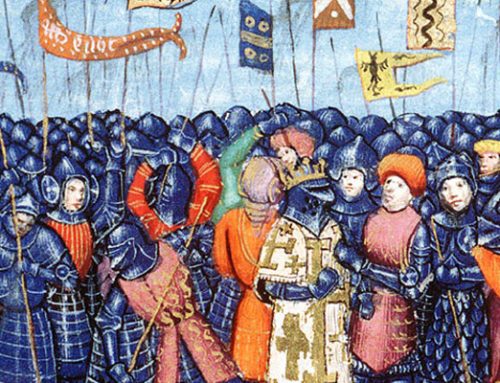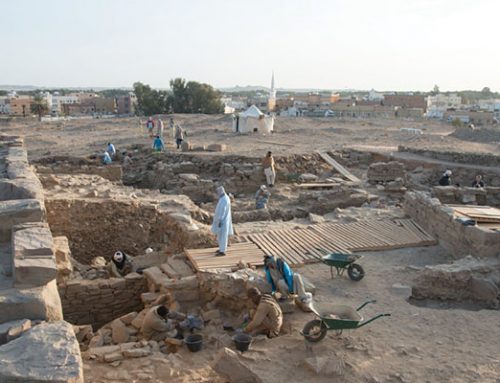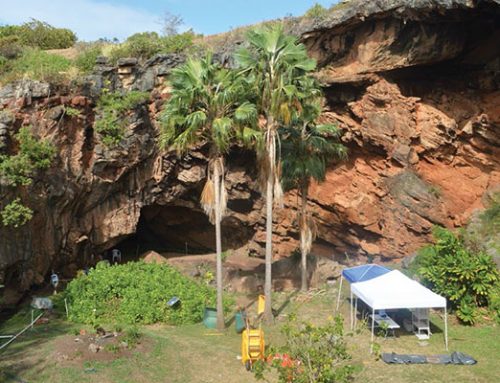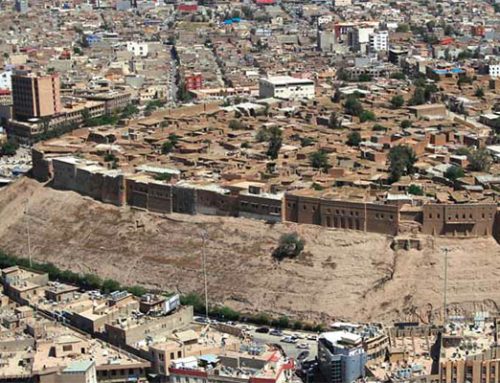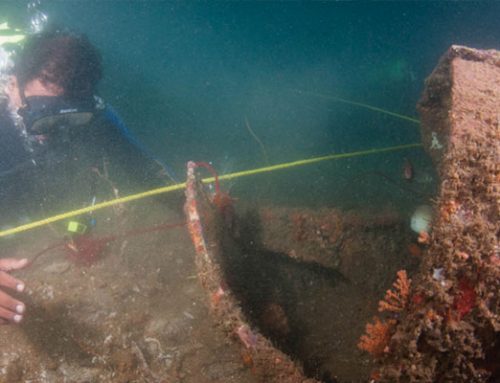The vast Egyptian necropolis of Saqqara is now emerging from the shadow of Giza and the Valley of the Kings
Pilgrim, priest, or pharaoh, each made the same sacred journey. Starting at dawn from the sprawling capital of Memphis along the west bank of the Nile River, they first crossed a shallow lake by boat to reach the great necropolis—a symbolic journey to the land of death. Stepping ashore, they began the climb up from the floodplain to the forbidding desert plateau. Silhouetted tombs of nobles from the 1st Dynasty appeared on the left, and, as the path curved south, ahead loomed the celebrated Step Pyramid, tomb of King Djoser, founder of the 3rd Dynasty (2662–2597 b.c.) and builder of Egypt’s first pyramids. In the early morning sun, the massive 200-foot-high tomb with its sixlimestone-encased steps sparkled brightly. A dozen other royal pyramids, each at the center of its own collection of temples and tombs, some enclosed by elaborate porticos and most filled with hand-carved reliefs in dim rooms, rose above the dusty plain. Smoke from offerings drifted over the site, day and night, blowing in the dry desert wind over the capital in the lush valley below.
It is hard to imagine today that Saqqara—the oldest cemetery of unified Egypt and arguably the world’s most elaborate and extensive burial ground—was built to impress as well as inter. The modern entrance into the famed graveyard is anything but inspiring. As I arrive on the bumpy road from Cairo in a rickety taxi traveling alongside fetid canals, drink stands under date palms give way to a concrete guardhouse; the tarmac winding up the barren hillside leads to a jumble of dun-colored mounds presided over by the crumbling Step Pyramid, shorn of its limestone. Even the few tourist buses parked near the pyramid seem swallowed up in the vast landscape and relentless sun of a late fall day. Unlike the majesty of Giza to the north or the austere silence of the Valley of the Kings to the south, Saqqara feels simply desolate.
It is, at the same time, overwhelming. I’m not sure where to start. Thousands of tombs are spread across an area nearly four miles long and nearly a mile wide, and covering more than 3,000 years of complex Egyptian history. “Saqqara is a virgin land,” says Zahi Hawass, director of Egypt’s Supreme Council on Antiquities and a long-time excavator at the site, when I visit him in his downtown Cairo office. “If you dig anyplace, you find a tomb. You don’t even really have to dig.” Two dozen archaeological expeditions are currently at work here—Egyptian, European, American, Australian, and Japanese—finding new tombs and restoring old ones. And because many of the early efforts were poorly documented, they are rediscovering those tombs already “lost” after more than a century and a half of excavations. Yet archaeologists estimate that they have only uncovered perhaps half of the tombs in this vast necropolis.
 |
| Coffins and carvings in the tomb of Neferseshenre, a vizier of the pharaoh Teti (2355–2343 B.C.) |
Saqqara has yielded some of antiquity’s most compelling art and architecture, from the magnificent complex of Djoser, which set the standard for future pharaonic tombs, to intimate, carved stone friezes picturing some of the most moving scenes of daily life in ancient Egypt, such as one in the modest grave of Nefer, a minor official, in which a farmer gently feeds and pets his bull. But it also remains vexing. Whether people actually lived there is in dispute. And despite all the Old Kingdom royal tombs, no mummies of rulers have been identified. At the same time, excavators have found tens of thousands of mummies of cats and dogs, ibis and fish, baboons and crocodiles. No concrete evidence of the workshops one would expect at such a vast funerary metropolis has been found, and, despite the richness of individual tombs, there is as yet no completed modern survey of the site. The gaps in knowledge leave many archaeologists frustrated. “It’s a pretty sad picture,” says Miroslav Barta, an archaeologist at Charles University in Prague who has dug at the site since the 1970s.
That is slowly changing. Instead of treating the site as a vast mine of mummies and artifacts, archaeologists now are starting to take a more comprehensive view of the site and to make more sophisticated interpretations. One team is near to completing a 16-year-long detailed survey of the area, which is uncovering both new sites and those found in the last century but lost in the drifting desert sands. And researchers are beginning to see Saqqara as a vast layered sacred space, rather than simply a huge collection of tombs spread willy-nilly across the plateau.
Hawass’ council is also sprucing up the place, which has long been a primitive site for tourists and excavators in comparison with Giza or Luxor and the Valley of the Kings. A young Egyptian Egyptologist proudly gives me a tour, as construction workers put the finishing touches on a new, white-painted museum, administrative center, and secure storage facilities, while work on guest houses and labs for foreign researchers is well under way, neatly hidden from view beneath the plateau in deference to the ancient structures nearby.
Reflections of Memphis
Saqqara’s name comes from that of a nearby village, and is perhaps derived from an ancient funerary god. The area is bordered to the north by the necropolis of Abusir and Egypt’s earliest preserved solar temple; to the south is Dashur and the “bent” pyramid with its sides changing slope midway. On a clear day, the pyramids of Giza form a phalanx visible to the north. But for ancient Egyptians, this 22-mile-long edge of the western desert from Dashur to Giza was one vast burying ground. Saqqara’s unique wealth of royal tombs, however, is due to its proximity to Memphis. On the Nile floodplain just east and below Saqqara, Memphis was the first capital of unified Egypt and a bustling center of religion, administration, and trade for three millennia.
 |
 |
| Well-preserved mummies, dated about 2,600 years ago, were found at Saqqara in 2005 by Australian and Egyptian archaeologists. | |
Situated between Upper Egypt and the fertile Nile Delta, the city served as a critical juncture in Egyptian culture, as well as an emporium for foreign goods. Unlike its rival Thebes to the south, with its remarkably intact temples, Memphis today is invisible. Remains of the royal palaces, the temple of its patron god Ptah, and grain storehouses, as well as quarters for the priests of Saqqara, Syrian and Greek merchants, and common laborers, are now buried deep under Nile alluvium. Much of what was still above ground in early medieval times was carted off to build the new capital of Cairo, 16 miles to the northeast.
Excavating at Memphis is no easy task. Fields and settlements cover the site, and the water table is high. In addition, the gradual movement of the Nile eastward over millennia makes Memphis a difficult target. “The whole city moved around,” says Aidan Dodson, an anthropologist at Britain’s Bristol University. Yesterday’s river bed became today’s row of warehouses and temples. And with Cairo’s suburbs creeping south, new construction threatens to destroy or seal off Memphis’ remains. “In another 10 or 12 years, there will be nothing left,” says Alain Zivie, a French archaeologist who has worked for more than two decades at Saqqara.
 |
| Painted sculptures of family members adorn the walls of the tomb of Irukaptah, an early 5th Dynasty priest and official whose titles included “Head of the Butchers of the Great House.” |
Memphis’ vanished life, however, is reflected in its premier necropolis. One of the earliest artifacts from the site is a porphyry bowl found beneath Djoser’s pyramid bearing the name Narmer, who ruled circa 3100 b.c. during what is called the late Predynastic period. Starting with the 1st Dynasty, which began just over a century later, senior court officials built a line of large mud-brick tombs overlooking the capital. Called mastabas (Arabic for “bench”), each of these buildings consist of a central room for funerary objects, a burial chamber, and additional rooms. Kings were still interred in Abydos far to the south, in tombs excavated by German archaeologist Guenther Dreyer. Beginning in the 2nd Dynasty (2813–2663 b.c.), however, most of the kings as well as nobles were buried at Saqqara. By Djoser’s day, Egyptian architects were ready for a Under the leadership of Imhotep, the king’s architect, the world’s first large-scale stone structure took shape just south of the earlier tombs. What began as a large mastaba grew into a six-stepped pyramid at the center of a vast complex that included a ceremonial entrance as well as chapels and temples to maintain King Djoser’s cult. Excavating and restoring the complex was the life’s work of French Egyptologist Jean-Phillippe Lauer—one of many archaeologists who have devoted their entire careers to this single rich site. He came to Saqqara in 1926 to advise British excavator Cecil Firth, and spent an astonishing 75 years here, also examining other pyramids and reconstructing pyramid texts until his death in 2001.
Over nearly a millennium, Djoser’s successors built 13 more pyramids at Saqqara. None match the size of those at Giza to the north. “That was probably because Saqqara lacked the bedrock capable of supporting them,” says Barta. While some Old Kingdom rulers chose Abusir to the north or Dashur to the south to build their pyramidal tombs—the changing preference for pyramid location perhaps reflecting the shifting position of Memphis on the floodplain below—Saqqara remained the favored place for most royals, given its centrality and its antiquity.
And, increasingly as time went on, it drew nonroyals as well. For a thousand years, an unbroken succession of court officials were laid to rest in tombs at Saqqara, many with vivid reliefs detailing every aspect of life, from priests performing death rituals to peasants plowing. One of the most compelling tombs, though currently closed to tourists, is that of Nefer. My Egyptian guide fumbles with keys to unlock the inconspicuous tomb of this man, a supervisor of artisans and director of choir singers who lived in the twenty-fourth century b.c. and is buried in rock facing the causeway of the pyramid complex of King Unas (2385–2355 b.c.). Along the walls inside are magnificent carvings of everyday life: men wading in water to collect papyrus and village women going about their tasks. The color on the panels is still vivid and comes as a shock after the dull desert outside. As I climb down a rough ladder into the burial chamber incised into the floor, there is Nefer himself, lying peacefully, his mummified features clearly, eerily outlined.
 |
| Scenes carved on a steatite disk—found in the tomb of Hemaka, a 1st Dynasty royal treasurer—show a hunting dog catching a gazelle. |
Yet despite the outward appearance of continuity, the status of the dead and the premium locations at Saqqara appear to have changed as frequently as the shifting river and city below. Saqqara lost its prestige during the Middle Kingdom, circa 2066–1650 b.c.; it is not clear why, but little is known about the status and even exact location of Memphis in this period. But by the start of the New Kingdom, around 1550 b.c., a revival of traditional art at Saqqara appears in a dazzling array of royal tombs along the face of a steep wadi. In that period, the capital was Thebes and, for brief time in the fourteenth century b.c., it moved to Amarna when Akhenatenrevolution.ancient abandoned the old gods for his sun god, Aten. “But we can’t forget Memphis was still a happening place,” says Zivie. While royal burials took place in the Valley of the Kings and Valley of the Queens near Luxor or near Amarna, the greatest courtiers, such as Horemheb (who later became pharaoh), and members of royal families, like Ramesses II’s sister, built tombs at Saqqara.
During recent years, Zivie has found an impressive array of tombs, mummies, and artifacts from this later era of Saqqara, including the remains of a lion (probably buried much later than the other tomb occupant, King Tut’s wet nurse). His finds offer a more complex reading of the controversial Amarna period. A scribe buried in one has two names—Raya, typical of the Aten cult, and Hatyiay, a word related to the Theban god Amun. And while other Amarna-period tombs typically include reliefs of everyday life done in a more naturalistic style, the scribe’s tomb has far more traditional scenes of funerary rites. These and other finds provide hints that the concept of Akhenaten’s monotheistic revolution may be overstated, says Zivie. “But we are still collecting data, and we can’t jump to conclusions,” he adds. Nor did Amarna’s style vanish abruptly with Akhenaten’s death. When his successor Tutankhamun abandoned Amarna for Memphis, his artisans came as well to work on Saqqara’s tombs. The result was a blending of the Amarna naturalistic approach with traditional styles.
Not just royals and senior officials now counted Saqqara as their resting place. Increasingly, wealthy merchants and other commoners built their tombs on the plateau. And starting with Amenhotep III, soon after 1400 b.c., the sacred Apis bulls—quartered at the famed Memphis temple of Ptah, were entombed in a massive underground complex of long galleries (one nearly 660 feet long) with niches to hold the bulls. Originally considered incarnations of the creator god Ptah, the chief deity of Memphis, the bulls were later associated with Osiris, god of the underworld. They were brought to their resting place up a massive ramp from Memphis below that led to a monumental avenue described by Strabo in the first century a.d. as lined with 135 sphinxes. The giant Apis sarcophagi proved so daunting for the nineteenth-century archaeologist Auguste Mariette that he resorted to dynamite to open the stone lids. Nearby, other cult temples and tombs were built to inter other mummified animals.
And despite Saqqara’s long history of excavation, it continues to astonish. Last year, an Australian team led by Macquarie University professor Naguib Kanawati discovered three cedar-wood coffins with mummies wrapped in intricate and beautiful strings of beads. Though found in the tomb of an Old Kingdom royal, the mummies are likely more common folk who lived during the 26th Dynasty in the seventh century b.c. Such layering of time and space is everywhere to be seen here.
Sounding Saqqara
But the sheer size of Saqqara coupled with the shifting sands have made it difficult for archaeologists to see beyond the particular tomb in front of them. Even the Serapeum Way—the ceremonial route to the tombs of the Apis bulls that Mariette had cleared—was long ago covered and its exact location lost. But in recent years, Ian Mathieson, the Scottish leader of the Saqqara Geophysical Survey Project, rediscovered the avenue and mapped the dozens of temples and tombs lining the route.
Mathieson has been at work since 1990 mapping Saqqara’s innumerable underground structures. “No one knows within more than 100 meters where some tombs are,” he says. “Maps produced in the 1800s don’t really bear any resemblance to where they really are.” His team typically uses a magnetic gradiometer to spot underground features, judging depth by digging small sounding trenches. The method provides valuable data on what lies 10 to 16 feet below without labor-intensive and potentially damaging excavations—a necessity given the vast area and many structures at the site. The project also uses ground-penetrating radar to pinpoint individual tombs, as well as electrical-resistivity gear able to locate walls or stone buildings nearly 50 feet below the desert surface. He and his small team, supported by Glasgow Museums, spend 3 to 10 weeks a year methodically examining the area, and he expects to finish up within three to four years.
Mathieson recently mapped a densely packed area of nearly 100 square acres not far from the Serapeum which he has nicknamed “the settlement.” He says “they might be tombs, houses, or workshops. You would have to dig to prove which they are—and once you start digging you would be at it for 25 years.” Archaeologist Mark Lehner uncovered an organized town at Giza clearly designed to house workers, and Mathieson speculates that his site might prove similar. Others, such as Barta, scoff at the idea. Though priests may have stayed overnight in temporary shelters to conduct rituals and make offerings, he insists that the city consisted solely of the dead.
With Memphis no more than an hour’s walk away, Barta says there was no need for the kind of settlement like the one Lehner is examining at Giza. The kings building those pyramids “had to supply a work force,” he says. At Saqqara, Memphis could easily provide the necessary labor. Only further excavations can settle the dispute, and there is more than enough to dig. Last year, Mathieson came across yet another area packed with structures that he believes are large-scale tombs or palaces.
Another puzzle is the lack of Old Kingdom royal mummies and their accoutrements for the afterlife. “Our evidence is almost zero,” says Barta. Were the tombs really monuments, lacking the actual bodies? Previously, some Egyptian kings were buried to the south at Abydos, which was sacred to the underworld deity Osiris, but this practice ceases after the 2nd Dynasty. Some mummy parts, including a foot, were found in Djoser’s burial chamber, but recent radiocarbon dating show them to be from several centuries later. And to confuse matters, other mummy parts discovered in another chamber, that of a female, appear older than Djoser by a few generations.
But Barta notes that the inscription on the walls of the Pyramid Texts, precursors to the Book of the Dead with detailed manuals on how to reach the afterlife, make it highly unlikely that the structures were not tombs. The concentration of kingly graves certainly encouraged looters, and some graves likely were cleaned out within decades of their completion, he adds. Most of the mummies, he says “were totally destroyed.”
Also missing are the workshops that go along with Egyptian necropoli. But Mathieson recently has found what he believes is evidence of New Kingdom workshops and stores near the Serapeum, where a pilgrim might buy, for example, a mummified ibis as an offering—his team has found numerous sets of jars in which such ibis were sold. As for the mummification centers themselves, they may have been located close to the Nile, for sanitary purposes, and are now deep under alluvium.
Saqqara’s mummies and reliefs have kept archaeologists busy for decades, but a few researchers are starting to focus on less exotic finds. Barta, for example, is examining several species of beetles found in situ that provide good evidence for climatic shifts. And, at the time that some scientists believe that a severe drought brought down the Akkadian Empire in Mesopotamia circa 2100 b.c., a species of beetle better adapted to arid desert appears at Saqqara. Other beetles associated with swampy environments appear in other eras. That data could prove important in the ongoing controversy over the role of drought in the late third millennium b.c., and the overall effect of environmental changes in the emerging empires of the Near East. Such new approaches offer a fresh take on old tombs.
New Home for Old Mummies
As archaeologists struggle to make sense of ancient Saqqara, the modern site is getting a much-needed face-lift. Tired of tomb-trudging in the midday heat, I visit Kamal Wahid, director of Saqqara’s antiquities, in the old administrative center high on the escarpment. He says that the colonial-style villa, with its quiet garden and crumbling walls, will soon be torn down. Below, a new museum, storeroom complex, and facilities for researchers are nearing completion in a less obtrusive location under the ridge.
The new storerooms are urgently needed. Until recently, 67 buildings scattered across the area stored 50,000 objects, including more than 400 mummies, collected over more than a century. “They were all unsafe, not very secure,” says Wahid, who is is overseeing a major expansion that will concentrate storerooms in a single complex locked behind high fences and monitored by television cameras in two control rooms. His staff already is filling the climate-controlled rooms with mummies, funerary jars, and thousands of pots. The improved conditions should stymie deterioration of artifacts in the wild swings of heat and cold on the plateau.
The facilities also include an administrative area, a darkroom, and a lab for researchers as well as high-speed Internet access. Nearby, three villas for foreign archaeologists are under construction.
The uninspiring entrance to Saqqara also is being reworked. As I leave, workers were putting the finishing touches on the new museum, which includes a lecture hall and several galleries to cover Saqqara’s extensive history. Wahid also intends to introduce electric cars that will take tourists from the parking lot below to the plateau, providing both added security—a concern in the wake of the terrorist attacks, such as the one at Hatshepsut’s tomb in 1997—as well as a more aesthetic experience for visitors. As at Giza, officials will begin a regular cycle of closing tombs for restoration and cleaning.
“In the future, coming to Saqqara will be completely different,” predicts Wahid. “We are developing the site—but in a good way that is invisible.” The new experience will not rival the drama felt by ancient visitors, but doubtless it will provide tourists with a better grasp of the place. The more difficult task will be for scholars to piece together a more integrated view of the maddeningly diverse and rich past of Saqqara. Despite Mathieson’s survey and attempts at understanding the site’s complex past, no single person or institution is tracking—much less analyzing—the huge amounts of data emerging from the plateau. Such an ambitious effort may remain for the next generation. Until then, Egypt’s great city of the dead no doubt will continue to reveal more secrets, while remaining one of the ancient world’s most tantalizing and challenging sites.
